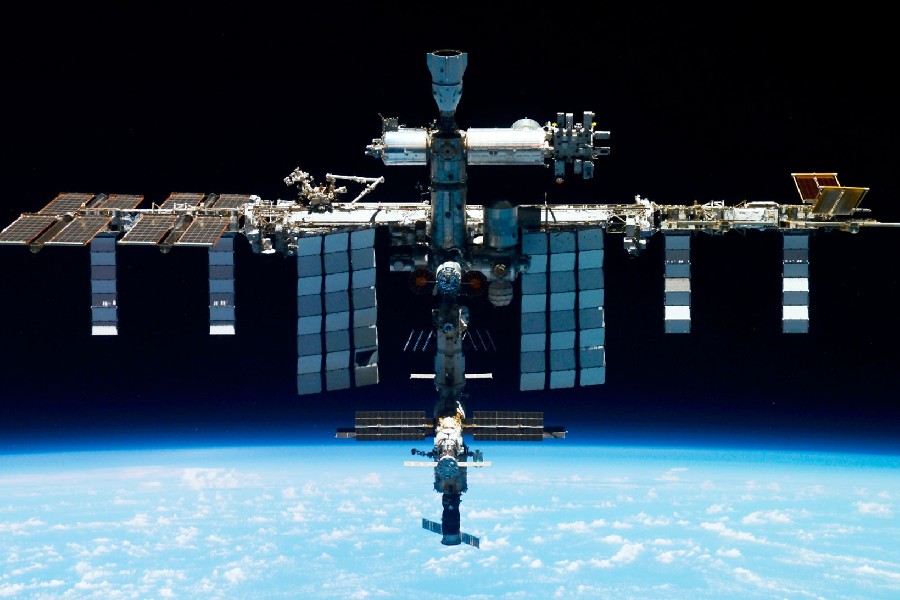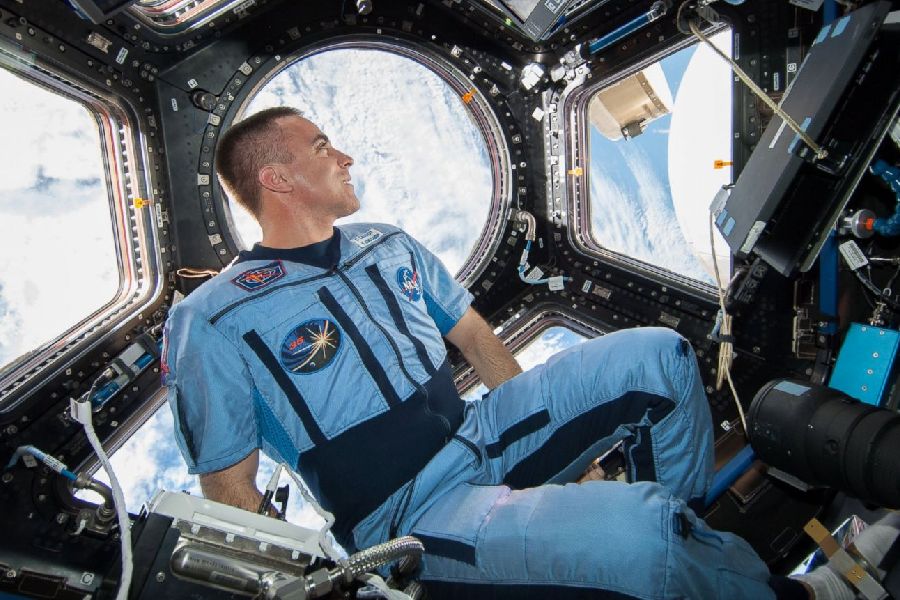Since the dawn of space travel, humans have dreamed of not just visiting space but someday living there. Today, that vision has party become a reality aboard the football field-sized International Space Station– the world’s only continuously inhabited outpost away from Earth. But what is ISS?
We’ll uncover everything from launch to life support to scientific discovery within this high-tech orbital facility.
The International Space Station is almost the size of a football field and weighs over a million pounds. This project represents an unprecedented collaboration of nations across the world. They worked together for over ten years on the ambitious goal of assembling an orbiting science lab 200 miles above Earth.
Let’s investigate the design, assembly timeline, and operational capabilities driving innovation aboard the only orbiting outpost where humans currently live off the Earth – the International Space Station, but for scientific research purposes.

What is ISS?
The International Space Station (ISS) is a large spacecraft that orbits Earth at an average altitude of approximately 420 kilometers (about 261 miles).
It serves as a unique and collaborative space laboratory where astronauts and cosmonauts from various countries conduct scientific research and experiments in the microgravity environment of space.
The ISS is a joint project involving space agencies such as NASA (United States), Roscosmos (Russia), ESA (European Space Agency), JAXA (Japan Aerospace Exploration Agency), and CSA (Canadian Space Agency).
Purpose of ISS
Primary objectives and goals
The core objective driving the ISS partnership revolved around harnessing outer space. The goal was to achieve the betterment of all humankind. This is achieved through peaceful scientific investigation and engineering advancements. Specific primary goals included:
- Establishing a permanent human presence in orbit enables longer deep space missions later, plus commercial pursuits;
- Assembling state-of-the-art microgravity lab boosting materials science, biotech, and pharmaceutical development;
- Fostering global unity via ambitious aerospace collaboration between nations;
- Safely demonstrating cutting-edge space technologies and Earth sustainability models for our civilization here;
The multipurpose orbiting platform continues enabling premier research and key technology demonstrations today.
Years in Orbit
Duration in space
The first ISS module launched into orbit back in 1998, initiating station construction. Global coordination drove continuous additions of more modules over the years. This major expansion culminated when the final key components joined to complete the International Space Station structure by 2011.
For over two decades, since it became operational in 2000 up to 2023, this orbiting laboratory has delivered important discoveries. It has also made groundbreaking progress in letting humans live and conducting long-term research in space.
Operating beyond specifications
By 2015, the assembled ISS operating capacity had exceeded initial design specifications, which drove decisions to extend operations from 2020 through at least 2030.
With most major components designed for replaceability and upgrades, the prolific International Space Station flies on as humanity’s most financially and technologically substantial endeavor in the final frontier. This enduring achievement continues demonstrating international spaceflight leadership with a spirit of adventure and dedication to incremental breakthroughs.
Significance of the Space Station
The assembled ISS drives space progress as humanity’s most ambitious, peaceful space endeavor. It provides an orbiting foundation advancing science prowess and capabilities for interplanetary travel.
Research insights
Over 4,700 experiments aboard demonstrate prolific value. These cover microgravity physicochemical processes plus terrestrial applications. The findings also drive developments improving sustainability on Earth.
Moreover, continuous inhabitants build expertise on human health factors and psychology. This proves essential knowledge poised at the cosmic frontier. It prepares for ambitious future voyages into space.

Living Spaces on the ISS
Habitation modules
Earth-facing modules include the Russian Zvezda Service Module plus NASA’s Harmony and Tranquility Nodes. These house sleep stations with personal bunk bed compartment units accruing some degree of privacy for each astronaut.
They are also equipped with bathrooms, kitchen facilities, and exercise gear for maintaining health and hygiene aboard. Cupola and multiple windowed modules offer views below our dynamic home planet.
Living conditions
The ISS offers quarters with a moderate-humidity oxygen-nitrogen atmosphere. Thermal controls manage between 21-26 °C. While the station appears weightless in orbit, 89% gravity is experienced onboard compared to our planet’s surface.
Cargo vehicles frequently resupply experiments plus essential life support consumables. The outpost’s remote locale enables unique snapshots and celestial vistas few have witnessed.
International Collaboration
Involvement of USOS
The United States Orbital Segment comprises over half the station’s pressurized volume. USOS launched the Unity, Harmony, Tranquility, plus multiple lab and connecting modules.
It handles key life support plus power distribution duties. NASA utilizes USOS to conduct microgravity physical science, radiation monitoring, plus technology demos.
Russian ROS and commercial crew
The Russian Orbital Segment contributes six modules, like Zvezda and Zarya, containing living quarters and propulsion systems. After the Space Shuttle’s retirement, Roscosmos Soyuz rockets provided the lone ISS crew access.
This lasted until SpaceX and Boeing Commercial Crew capacities came online under NASA certification by 2020. This expanded astronaut flights and science return bolstering utilization up to the approved 2030 timeframe and likely beyond.
Over 230 individuals from 19 nations have visited the prolific ISS over 23 years of continuous space endurance achievements. Ongoing investments expand capacity plus sustain peaceful global cooperation —ideals the multi-segmented platform itself physically embodies in orbit.
Experiments in Living Spaces
Scientific research
The International Space Station’s orbital laboratory facilities, including habitation modules, host a multitude of microgravity and biology experiments.
For example, growing antibody crystals and cancer tissue cultures leverage the weightless environment. This facilitates targeted drug trials for disease treatments back on Earth.
Earth observations
Canadian Space Agency’s Maritime Aura slews the station, enabling hyperspectral imagers to pinpoint aerosol pollutants, oil spills, wildfires, plus vegetation stress far below.
Window Observational Research Facility cameras photograph major city light pollution, vegetation canopies, plus coastal waters, tracking sustainability. Findings shape orbital outpost models ahead while catalyzing environmental responsibility on our planet.
JAXA’s Kounotori cargo craft carried bowling ball-sized spheres filled with water, ethanol, trimethylene glycol, and aqueous solutions for fluid experiments. The Alpha Magnetic Spectrometer mounted along trusses detects cosmic ray antimatter to probe the origins of dark matter.
Conclusion
We hope touring the inner workings of football field-sized science labs orbiting Earth has enhanced our appreciation for ‘what is ISS’ – an unprecedented global collaboration advancing human knowledge 240 miles above our home planet.
As this article has shown, the ISS drives science across disciplines while cultivating expertise for longer voyages ahead. As cosmonaut Sergey Krikalev put it, “The ISS helps advance space exploration to further our civilization.”
May the ISS continue facilitating countless microgravity experiments and sustaining long-duration deep space access. This will help unite the international spirit to push new frontiers collectively—realizing the full potential of harnessing outer space to better life for all.
